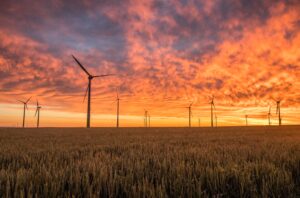Rising capital costs thwarts clean energy in emerging economies


(Photo by Karsten Würth on Unsplash)
Many emerging market and developing economies are missing out on clean energy investment as the high cost of capital for new projects is deterring developers, particularly for some of the world’s poorest countries, a new International Energy Agency (IEA) report finds.
Global clean energy investment has risen by 40% since 2020, reaching an estimated $1.8 trillion in 2023, but almost all the recent growth has been in advanced economies and in China. By contrast, other emerging and developing economies account for less than 15% of total investment, despite being home to 65% of the world’s population and generating about a third of global gross domestic product, IEA said. Capital flows to clean energy projects in many emerging and developing economies remain low.

To get on track for limiting global warming to 1.5 °C, IEA says clean energy investment in emerging and developing economies outside China needs to increase more than sixfold, from $270 billion today to $1.6 trillion by the early 2030s. The availability of concessional finance – primarily from international development finance institutions – would also need to triple within this timeframe, IEA said. Additionally, almost half of the total clean energy investment over the next ten years in emerging and developing economies outside China would need to go to utility-scale solar and wind projects, electricity networks, and spending on more energy-efficient building designs and appliances, the report said.
GO DEEPER: Check out the Factor This! podcast project finance playlist, including episodes on capital markets, debt financing, venture capital, power purchase agreements, and more. Subscribe wherever you get your podcasts.
Some clean energy technologies, such as solar PV and onshore wind, are already cheaper than fossil fuel alternatives in many parts of the world. But the report highlights that the cost of capital, or the minimum expected financial return to justify an investment, for utility-scale solar PV projects in emerging and developing economies was more than twice that in advanced economies. The report says that narrowing the gap in the cost of capital between emerging and developing economies, on the one hand, and advanced economies, on the other, by 1% could reduce these financing costs for clean energy by $150 billion annually.
“There are huge, cost-effective opportunities for emerging and developing economies to meet their rising energy needs with clean technologies, but financing has to be affordable as well,” said IEA Executive Director Fatih Birol. “Reducing risk through clear and timely regulation is a first step to attract investment. This needs to be underpinned by a significant increase in financial and technical support from the international community. We have to build new bridges between investors looking for clean energy opportunities and the markets where this investment is most needed.”
However, the IEA says almost all the required investments are in mature technologies and in sectors where there are tried and tested policy formulas. About 5% of the total clean energy investment needs through 2035 are in sectors that depend on nascent technologies like low-emissions hydrogen, hydrogen-based fuels, or carbon capture, utilization, and storage, the report said.



